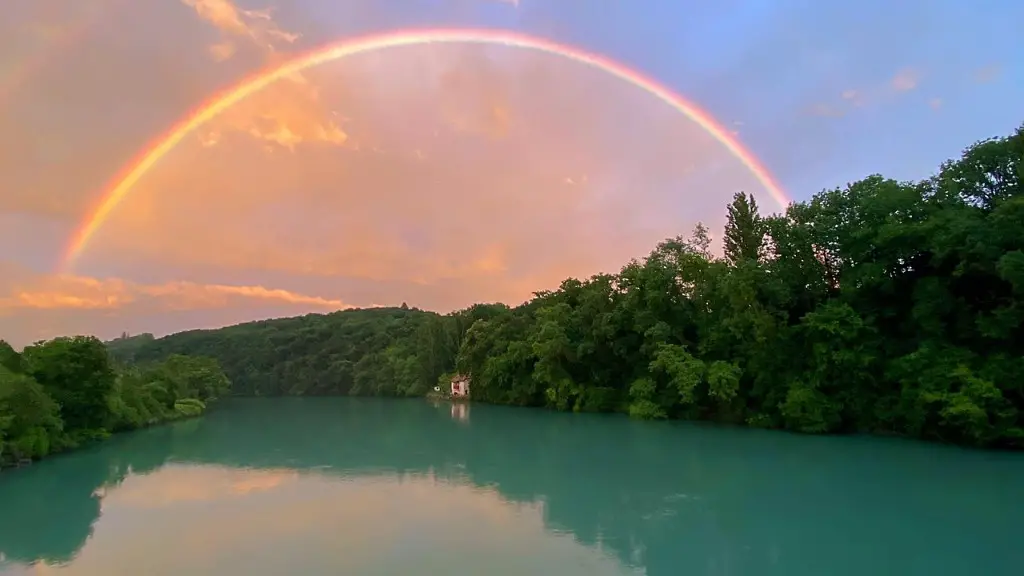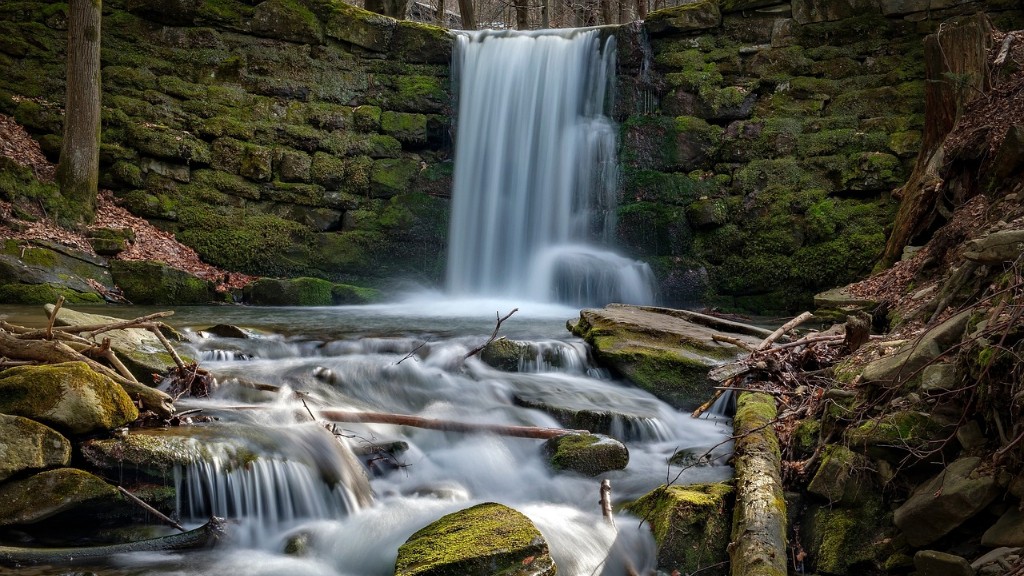The Upper Mississippi River
The Upper Mississippi River is one of the most significant rivers in the United States of America. It serves as an important tributary for the large Mississippi River drainage basin. It is fed by many rivers, including the Otter Creek, Wisconsin River, Big Sioux, Red Cedar, and St. Croix. The Upper Mississippi River is located in Wisconsin, Iowa, Illinois, and Minnesota and is the 12th-longest river in the world.
The Upper Mississippi River provides a crucial resource for transportation, recreation, and power production. It is home to a plethora of animals and plants, including bald eagles, beavers, great blue herons, and mussels. It supports more than 120 species of fish. In addition, the Upper Mississippi River draws visitors from around the world with its diverse landscapes, culture, and activities.
The Upper Mississippi River is under threat from various environmental threats, such as overfishing, destruction of aquatic vegetation, and agricultural runoff. In recent years, an invasive species of Asian carp, known as the silver carp, has made its way into the river, disrupting the natural food web.
To address these issues, several conservation and restoration efforts have been put into place, including the establishment of the Upper Mississippi River National Wildlife and Fish Refuge. This refuge includes 240,000 acres of public lands on which conservation of the river and its species is the focus. The refuge allows for a variety of recreation activities, such as hunting, fishing, and birdwatching.
The U.S. Fish and Wildlife service is also leading efforts to restore the Upper Mississippi River by controlling the population of the silver carp, as well as monitoring and controlling water levels. These efforts are improving the water quality and providing much-needed habitat for aquatic species.
The Missouri River
The Missouri River is the longest tributary of the Mississippi River, stretching 2,341 miles across North America. It is the second-longest river in the United States and is a crucial part of the country’s transportation, agriculture, and industry. The Missouri River begins in Montana and flows through Wyoming, South Dakota, Nebraska, Iowa, Kansas, and Missouri, eventually meeting up with the Mississippi River in St. Louis, Missouri.
The Missouri River is home to a variety of wildlife, including bald eagles, beavers, river otters, and white-tailed deer. The river is also an important source of food and shelter for many species of fish, amphibians, and reptiles. It is an important transportation route and provides hydropower to many communities along its banks. It is also a popular spot for recreational activities, such as fishing, boating, and canoeing.
The Missouri River is threatened by numerous environmental issues, such as pollution, erosion, and overfishing. In the early 20th century, the government embarked on a large-scale project to control floods on the river which led to increased development and pollution. Pollutants such as agricultural runoff, sewage, and industrial waste have drastically impacted the river’s water quality, and have greatly impacted the health of its wildlife.
To address these threats, the U.S. Army Corps of Engineers has put into place several conservation and restoration efforts, such as restoring natural floodplains, controlling erosion and sedimentation, and helping to maintain the river’s fish and wildlife habitats. In addition, the Corps of Engineers is working to restore the river’s wetlands which are vital for flood control, water quality improvement, and recreation.
The Ohio River
The Ohio River is a 981-mile-long river that flows through six states in the United States: Ohio, Pennsylvania, West Virginia, Kentucky, Indiana, and Illinois. It is the largest tributary of the Mississippi River, joining it at Cairo, Illinois. The Ohio River is a critical habitat for a variety of wildlife, including fish, turtles, ducks, and mussels. It is an important source of drinking water, recreation, and transportation, as well as a key source of hydroelectric power.
The Ohio River is facing a number of environmental threats, including pollution, sedimentation, and habitat destruction. These threats are caused by a variety of factors, including urban and agricultural runoff, sewage, industrial waste, and the effects of climate change. In addition, the rising levels of salt and other pollutants have had a devastating effect on the river’s aquatic species.
To address these issues, The Ohio River Valley Water Sanitation Commission was established in 1948 to improve water quality in the Ohio River Basin. The commission works to control the amount of pollution in the river, as well as to restore natural habitats. The commission also promotes the use of green infrastructure and sustainable practices to protect the river and its wildlife. In addition, efforts are also being taken to improve access to clean drinking water and recreational facilities along the river.
The Arkansas River
The Arkansas River is the second-longest tributary of the Mississippi River, stretching 1,460 miles across six states in the United States: Arkansas, Colorado, Kansas, Oklahoma, Missouri, and Texas. It is an important source of navigation, recreation, and fishing opportunities, as well as a key source of hydroelectric power. The Arkansas River is home to a variety of wildlife, including fish, turtles, waterfowl, and a variety of plants and animals.
Over the last several decades, the Arkansas River has experienced a number of environmental issues, such as pollution and habitat destruction. Pollution from industrial and agricultural sources has contaminated the river, resulting in dead zones and a decrease in the number of aquatic species. The runoff from farms and urban areas has also depleted the river’s oxygen levels, damaging the health of its existing wildlife.
In order to address these issues, governments and conservation groups have implemented a variety of conservation and restoration efforts. These efforts are focused on reducing pollution and improving water quality, as well as restoring natural habitats and creating new ones. The Arkansas Natural Resources Commission, for example, is working to enhance the water quality of the Arkansas River by controlling the amount of chemical and sediment runoff that enters the river. In addition, the commission is working to improve recreational opportunities on the river.
The Red River
The Red River is a 1,320-mile-long tributary of the Mississippi River that flows through five states in the United States: Minnesota, North Dakota, South Dakota, Oklahoma, and Arkansas. The river is an important source of navigation, recreation, and wildlife habitat, and is home to a variety of fish, birds, and other animals. In addition, the Red River Basin is the source of drinking water for more than two million people.
The Red River is threatened by numerous environmental issues, including pollution, sedimentation, and habitat destruction. These threats are caused by a variety of factors, including agricultural runoff, sewage, industrial waste, and global warming. In addition, the rising levels of sediment in the river have caused a decrease in the number of aquatic species, as well as a decrease in water quality.
To address these issues, the Red River Basin Commission has been working to restore the Red River and its tributaries since its establishment in 1981. The commission provides a platform for stakeholders to collaborate on the management and protection of the river and its resources. This includes setting water quality standards, as well as controlling and reducing pollution. In addition, the commission supports the development of new wetland areas and to improve recreational opportunities on the river.
The Souris River
The Souris River is a tributary of the Assiniboine River, which itself is a tributary of the Red River. The Souris River is located in the Canadian and American states of Manitoba and North Dakota, respectively. The river begins in the northern part of North Dakota and flows through Montana and Saskatchewan, then joins the Assiniboine River in Manitoba.
The Souris River is home to a variety of wildlife, including fish, waterfowl, and mammals. It is an important source of navigation, recreation, and drinking water, as well as a key source of hydroelectric power. Over the past few decades, the Souris River has experienced a number of environmental issues, such as pollution, sedimentation, and habitat destruction. These threats are caused by a variety of factors, including agricultural runoff and industrial waste.
In order to protect the Souris River, the International Joint Commission has established the Souris River Joint Water Quality Board. This board was created to provide a platform for stakeholders to collaborate on the management and protection of the river and its resources. This includes monitoring water quality, setting water management objectives, and developing a basin-wide pollution control plan.
The Minnesota River
The Minnesota River is a tributary of the Mississippi River, flowing approximately 350 miles across the U.S. states of Minnesota and South Dakota. The Minnesota River is an important source of agriculture and industry, as well as navigation and recreation. It is home to a wide variety of wildlife, including fish, amphibians, and waterfowl.
The Minnesota River is threatened by various environmental issues, such as pollution, habitat destruction, and overfishing. These threats are caused by a variety of factors, including agricultural runoff, sedimentation, sewage, and industrial waste. In addition, the increasing levels of sediment in the river have had devastating effects on its aquatic species.
To address these issues, The Minnesota Pollution Control Agency has set into place several efforts to clean up and restore the river. These efforts include reducing pollutants and toxins from entering the river, improving watersheds, and restoring aquatic habitat. The agency is also working to develop a basin-wide stream monitoring program to track changes in the river’s water quality and to identify potential sources of pollution.





